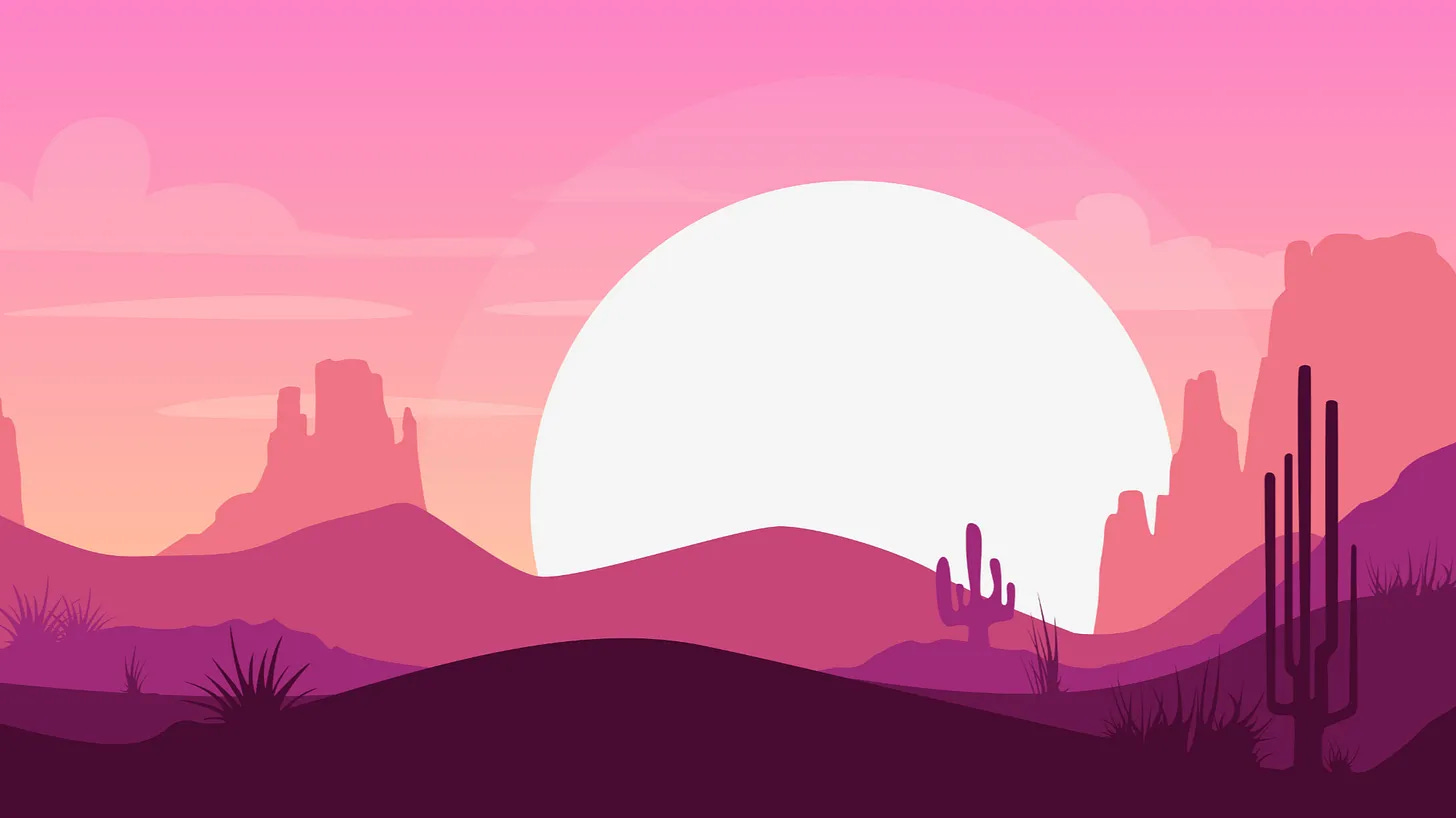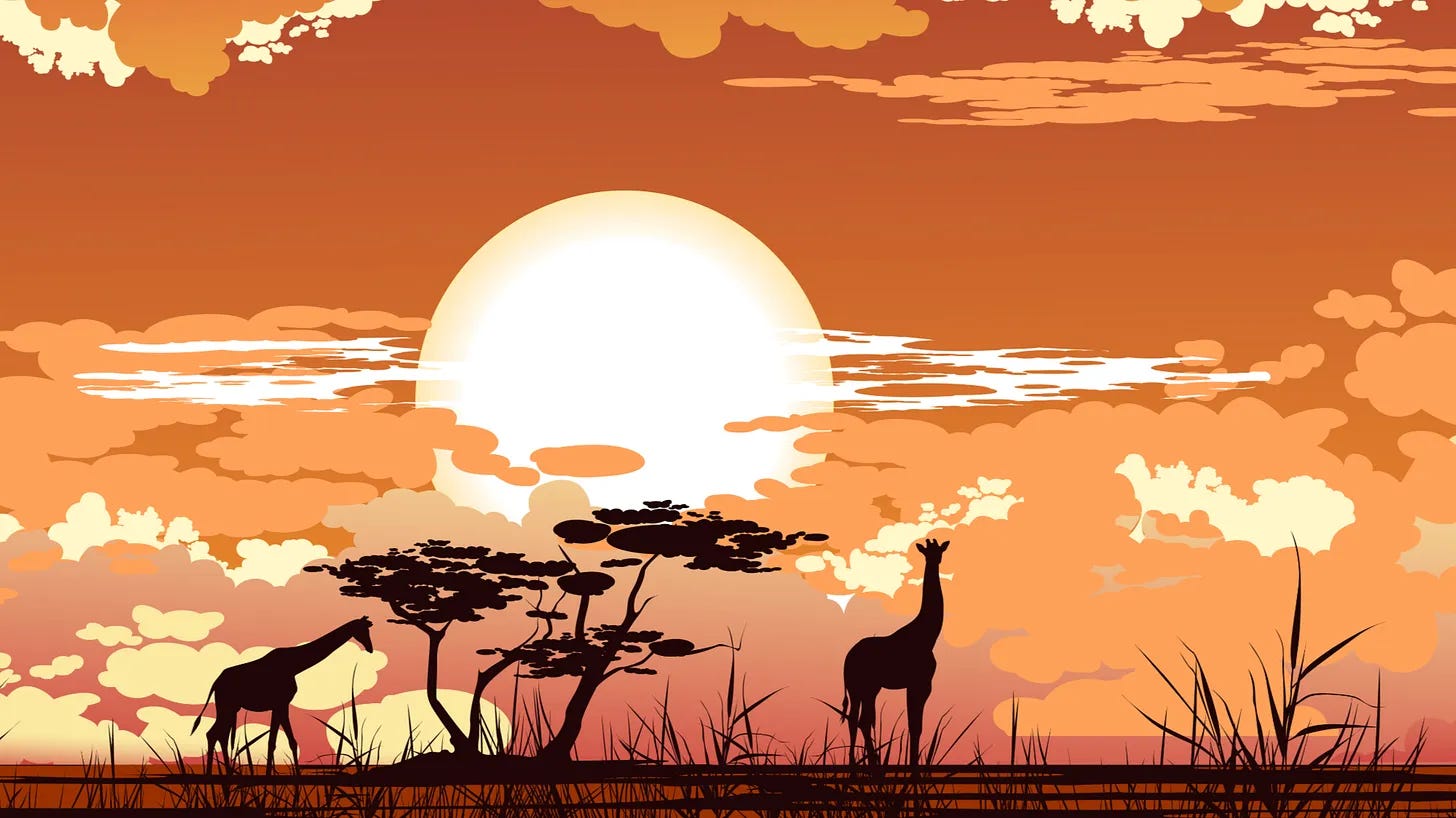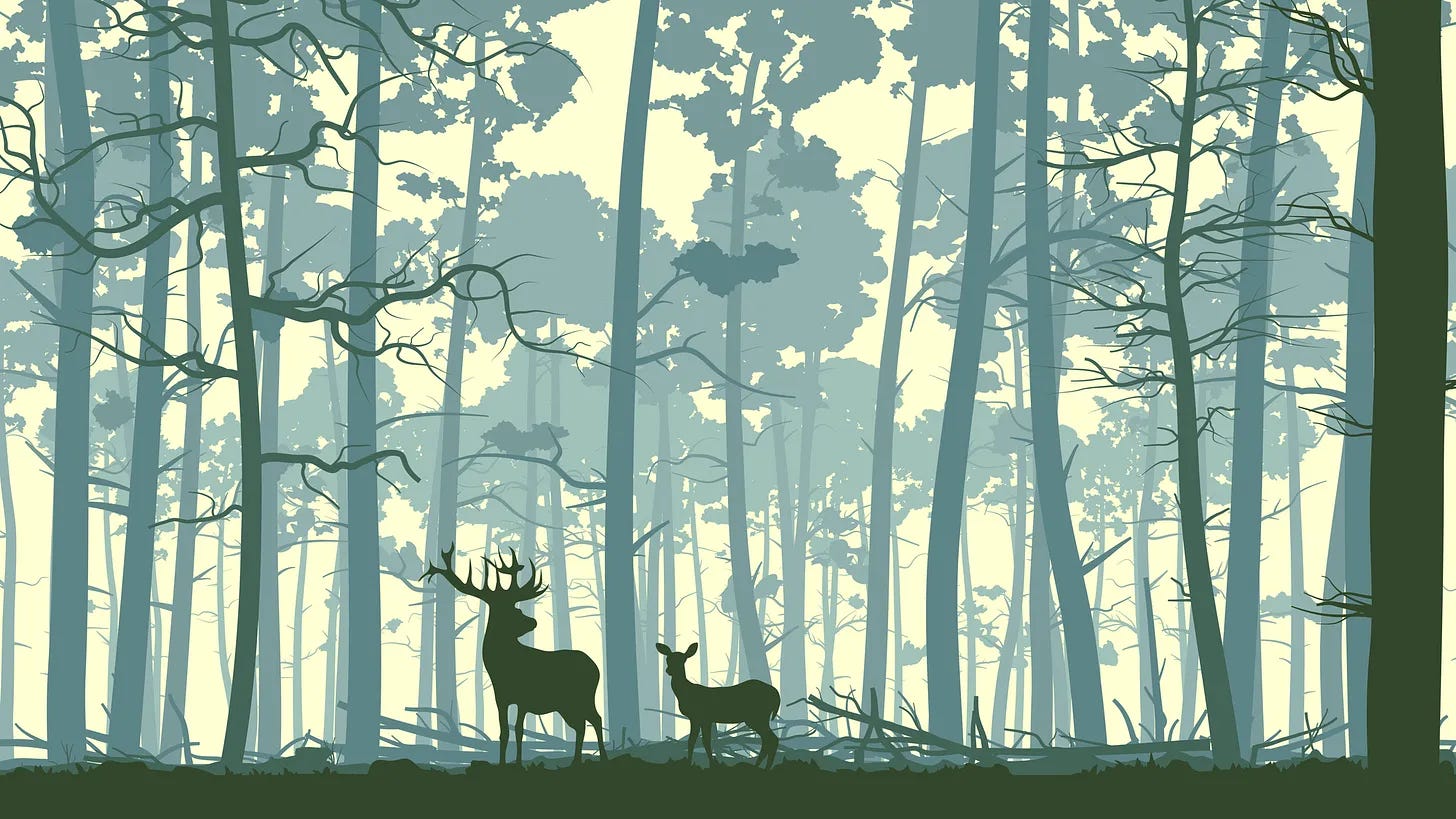Subscriptions for each Author Ecosystem
Subscriptions can work for any ecosystem, but they will each find different advantages and challenges from the platform. Here, we lay it all bare.
If you haven’t had a chance to take our quiz yet, I highly recommend taking it before you read this article. Additionally, if you haven’t taken a look at our membership options, I think they are pretty neat.
Building subscriptions into your business is one of the most important ways you can create stability as a writer. Kickstarter launches are great to infuse quick cash into your business, but in order to make long-term plans, it’s important to know how much money you have coming into your business predictably every month.
Even though I am very, very, very good at predicting the arc of a Kickstarter campaign, my estimates fall within a range of a few thousand dollars. When you get subscriptions working inside your business, you can start knowing exactly how much money is flowing through your business. More than anything else, this is the best way to combat the feelings of uncertainty that plague almost all writers.
In publishing, I see two types of subscription programs working well right now; publication and association.
In the publication model, customers pay to access the complete archive of a publisher’s content. This includes any previously released work and any paid content created specifically for paid members.
You can find the publication model all over the internet, specifically in newspapers. Readers of The Washington Post or The New York Times are paying to access the reporting and additional content the newspaper provides.
That does not mean publications only provide articles for their readers. There are plenty of games on The New York Times site, and it’s very possible to run this kind of model without publishing one word of text.
Take a website like World Anvil. With it, you can create detailed world maps for your universes. You pay a monthly fee, and in return, you receive access to the tool and the ability to use it. You might pay more for a commercial license, but your loyalty isn’t really to the brand, it’s to the product.
As you’re reading this on Substack, you are likely familiar with the most popular outlet for the publication model among writers. Substack is the perfect venue for a publication model because the publication model relies on SEO and organic reach.
For those of you who don’t resonate with this model, the second type of subscription that works well for authors is the association model, where you mainly pay to be part of a group of like-minded humans.
While you would be unlikely to identify yourself as a reader of The Washington Post, you are likely to identify yourself as a member of an association. This model is all about belonging.
Making connections is critical, and joining associations give countless opportunities to connect on a local and sometimes even global level. For most people, creating professional relationships is important, and joining a group allows you to have a sense of security and trust. -4C
When thinking about this model, you can connect it to organizations like Elks Lodge, the Boy/Girl Scouts, or even a bowling league. Yes, we join a bowling league because we like bowling, but we’re mostly joining it for access to other like-minded people who have similar interests. If you think of the clubs you joined in high school, it is likely you got as much out of the friendships you made along the way then from the activities you did together.
Unlike publications, that get by on virality, associations are all about offering perks to their members to help them connect together and form a deeper connection to the association. For this reason, people using an association model should paywall all or most of their content. Patreon and Ream are perfect places to build an association model because they offer multiple tiers to monetize your more ardent, but less numerous, subscribers.
In general, Deserts and Grasslands tend to resonate with the publication business model while Aquatics and Forests tend to resonate with the associate business model. Tundras can go either way, but they will go that way kicking and screaming because continuity doesn’t tend to go well with their launch model.
I talked a lot more about this concept in this recent article, but here I want to talk about how to utilize subscriptions in a way that resonates with each ecosystem.
Desert
Advantages: The secret power of a Desert is optimization. Deserts can look at a newsfeed and understand the underlying code powering it. If you’ve ever seen people talk about “gaming the system” that’s probably a Desert. They love finding ways to “win the conversation”.
Because of this, a publication subscription, especially one built on timeliness, would likely work best for them. While most other ecosystems would burn out releasing a daily newsletter akin to 1440 or Morning Brew, quick turnaround and mining attention while it’s hot are two huge skills of a Desert. Additionally, platforms like Sparkloop and Beehiiv leverage that virality factor to help amplify that message through advertising.
The idea of these networks is that publications can offer to pay a certain amount for every verified subscriber you send to them. For instance, Bookbub has offered as much as $6 a subscriber since I’ve been watching the network closely.
Similarly, you can pay for subscribers other people bring to your publication as well. The idea is that if you are paying $2 a subscriber while making $2 a subscriber, you can basically grow for free. The more often you release newsletters, the more you can offer to pay because you are making more from the network with every send.
Most of the biggest newsletters in the world use this strategy to grow fast, funneling their ad revenue back into their business to add thousands, even tens of thousands of new subscribers into their ecosystem every month.
This isn’t only for non-fiction authors, either. Today in Books is a great example of a publication that traffics on the hot stories of the day but with a bent toward readers.
Challenges: Subscription growth can be slow and churn is a real challenge, especially for a Desert. Unlike the other ecosystems, people aren’t connecting as much with the writer as the content, and if somebody serves your subscribers better, they are prone to leaving quicker for greener pastures.
For this reason, I would consider making your subscriptions ad-focused and sponsorship-based instead of reliant on membership income. I subscribe to dozens of news organizations to make sure I’m getting full coverage, but I only pay for one.
The strength of a Desert is being able to plug into the “winning” conversation and ride those gains to success fast. Then, they find a new trend and ride that, building momentum by finding that wave consistently.
The association model would likely be the least appealing to a Desert as it requires significantly more love and attention than the publication model. Forests and Aquatics love doting on their subscribers, so they can usually make more per subscriber than a Desert, who will make up in volume what they can’t in depth of devotion.
Grassland
Advantages: The publication model is tailor-made for Grasslands, who are built for depth. This model rewards subject expertise and extensive knowledge of a topic, which is exactly how Grasslands “win” the marketing game. Readers are more than happy to geek out on a topic with you all day every day for years.
Additionally, the publication model rewards “putting pennies in the bank” by slowly building their platform over time. Grasslands love content marketing and want their work to be disseminated widely, which is why their work is often antithetical to the association model.
In the association model, most of the benefits are locked behind a paywall unable to with the SEO game and bring new people into a Grasslands orbit. Additionally, while a Grassland is happy to speak on a topic, they are more comfortable speaking from a stage or broadcasting their missives than engaging in 1-on-1 conversations with subscribers.
While the Desert and Grassland both prefer the publication model, it’s important to note that while a Desert is more like a reporter, finding the best topics of the day and trafficking in virality, a Grassland should think of themselves more like a columnist.
They will do better with longer, more in-depth explainers than quick snippets of the news.
Challenges: Many Grasslands get sucked into the association model, or covet the way a Desert can traffic in immediate virality, but a Grassland has success choosing a topic that will grow in importance over time, and then continuing to provide information about it for years and years as it slowly builds in importance.
Because of that, Grasslands are most inclined to hockey stick growth once the industry gets excited about their topic. However, until then there is likely going to be a lot of slow growth years where you’re seeding content all over the internet.
Don’t fall into the trap of paywalling your best content. You win by being found by the most people and building your content over time. That’s not to say you shouldn’t paywall some of your content. However, you should consider having most of your work freely available so that you can create a moat around yourself and any other expert by the depth in which you know your topic.
When we started working together, Monica changed her business to focus more on a live launch model and it didn’t work for her. People constantly asked why they couldn’t find certain articles or buy certain products. Grasslands are evergreen launchers, and they need to make sure their products are available when somebody finds them.
Tundra
Advantages: Tundras can harness excitement and stack tropes on top of each other like no other ecosystem, and that works really well on Kickstarter. However, they prefer to hibernate between launches, which is not ideal for subscriptions
As such, I recommend building a subscription around “PBS-style” pledge drives at certain times of the year to focus your energy. If you think about PBS, you can subscribe at any time, but you only get a tote if you pledge during certain times of the year.
This will allow you to harness excitement in a way that feels good to you, and focus your content creation on those peaks in your schedule. However, instead of launching a product during those peaks, you’ll be “launching” your subscription.
This seems to fit in nicely with a Tundra’s natural launch, recover, build launch cycle. It would also likely benefit you to get a month ahead of your content so you can turtle when you need to run away from the world.
Challenges: Subscriptions never end…like ever. Tundras are used to building excitement for something and then moving on to the next thing, but with a subscription, they have to keep going constantly. There is always another article due to satisfy the readers, and it’s a big shock to the system.
As such, I’ve had to learn to conserve my energy more because a subscription is a marathon, not a sprint. I’ve had to find more sustainable ways of doing less, while maintaining the same cadence of my ideal launch cycle.
Additionally, Tundras must remember to reference their vault of information as they continue through their subscription journey. We live to launch and move on, but subscriptions are about referencing and re-referencing your work forever. I found that using sections to help build a big vault of content helps keep continued momentum without needing to constantly be building that excitement every day of my life.
Mostly, you really do have to harness your inner Grassland and become much better at “putting pennies in the bank” in order to maximize your success with subscriptions.
Forest
Advantages: The association model of subscriptions is all about community, and Forests thrive in those settings. Since the association model is essentially a membership community, Forests should feel right at home on a platform like Patreon or Ream.
Because Forests love engagement, they should focus on platforms that have multiple price points (sorry, Substack) because they will not get a ton of value out of virality. It’s not that Forests don’t want to grow, but they have a unique bent on the world, which subscribers appreciate, but it won’t be everyone’s cup of tea.
That said, when somebody finds you and resonates with your work, they’ll want to go deep, which means they’ll often be willing to make a deeper financial commitment than with a Desert or Grassland. While those two ecosystems traffic in organic reach, a Forest traffics in resonance and creating a shared language everyone “in the know” can use to talk with each other.
Neither is bad, but you won’t win the organic reach game, so why play it?
Instead, play your own game and invite others to play with you as well. While Grasslands don’t get much benefit from putting their best work behind a paywall, a Forest likely will because they want to encourage people to go deep with them and give subscribers a safe space to explore their own weirdness.
If you’re using Patreon, you might consider connecting it to Wattpad or Royal Road and putting out a serialized project that can help funnel people into your subscription while utilizing the organic reach of those platforms. If you’re using Ream, then you can still connect with Paypal through those platforms.
Challenges: Forests have a hard time building momentum anywhere because their interests are wide-ranging and disparate, but if you can do the branding work early and somehow find a way to connect everything together, even in a tenuous way, you’ll have more success.
Communities are all about in-jokes and mutually agreed-on norms, but it’s important to remember while those things are incredible when you’re “in on the joke”, they can be intimidating to outsiders. Forests have problems when they fail to look outside their group and be inviting to others, so make sure to be as welcoming to those outside of your community as those inside of it.
If you want to bring in more subscribers, just make sure to give people permission to join and lower the barrier for them to do so. I call this “creating a path”. Forests are imposing, but having a well-trodden path makes it inviting for new people to join.
Like a Tundra, you might get a lot of benefit from doing a PBS-style pledge drive, but for a different reason. While a Tundra is doing so in order to traffic in excitement, you are doing it to create a low-barrier-of-entry way to welcome new people into your community and show them how to become a superfan by onboarding them in a low-key way.
Aquatic
Advantages: Aquatics make inroads all over the internet in a bunch of different formats, but they need a home base that keeps growing over time more than any other ecosystems. While most other ecosystems are focused on 1-2 different formats, an Aquatic wants to do all the things, which means when somebody does resonate with your work, you need to collect them.
Aquatics are masters of delighting their fans, but that delight probably won’t carry over to random people who don’t know what you’re talking about. As such, Aquatics should keep their most delightful work behind a paywall that can be accessed by people who really want to hear what they have to say, maybe offering trials of that work so people can see what is available to them if they become paying members.
Aquatics have the highest ratio of superfans of any ecosystem because once somebody comes into their ecosystem, they are constantly entertained and excited by what they find. Aquatics are constantly doing new and interesting things for their fans that confuse everyone else, which is fine. However, just make sure you keep it contained to the people who will appreciate it.
Challenges: While Aquatics have the highest superfan ratio of any ecosystem, they also tend to have the smallest total audiences. It’s the hardest for an Aquatic to find their people because they are trying to create something brand new. Even a Forest is trend-twisting, which involves taking a popular genre and twisting a trope, while an Aquatic is trend-making.
They are likely creating new categories, which makes their jobs even harder. If tech has taught us nothing else, they showed that it’s hard to find the innovators and early adopters who can validate your work while you expand it to the majority and eventually the laggards who will build it into a force to be reckoned with in the future. Every subscriber is precious, but you already know that.
You’ll probably need Kickstarter, conventions, and other bits of the direct sales landscape to make your ambition goals work, but it’s always good to have a place to collect your biggest fans and give them the ability to support your work.
Final thoughts
Subscriptions are an amazing and necessary part of every business, but it’s not something that you’ll start tomorrow and have hundreds of paid members next week.
I see the long-term value in subscriptions, so I’m happy to build for the future, but it is very much a “be kind to future Russell” scenario. I’ve tried dozens of membership communities, including building my own app, and Substack is the only time I’ve actually gotten any form of traction.
That doesn’t mean Substack will work for you. It might take you ten platforms to find the one that works, or maybe you’ll find it tomorrow.
Subscriptions are the definition of go slow to go fast. They don’t work until they do, but when they do, they really do. Like anything else, you see growth where you put effort. Even if you don’t have a ton of effort to give, the more you can intertwine your subscription into the rest of your business, the better. Subscriptions should be working under everything you do, feeding and slowly growing until it becomes something formidable by itself.
If you haven’t had a chance to take our quiz yet, I highly recommend taking it before you read this article. Additionally, if you haven’t taken a look at our membership options, I think they are pretty neat.










My entire creative career makes so much more sense through the Forest lens. Thanks, Russell :)